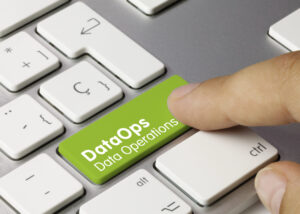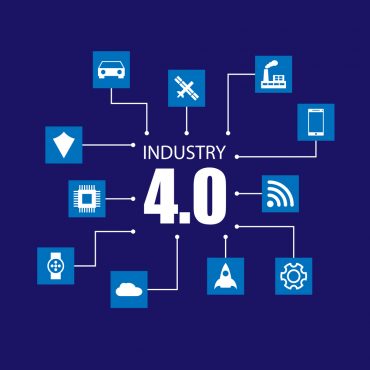
Industrial organizations that adopt DataOps principles early can accelerate AI deployment, reduce costly integration delays, and establish a sustainable foundation for innovation.
Industrial organizations are increasingly recognizing that data is as critical a resource as raw materials, skilled labor, or equipment uptime. This is especially true as organizations increasingly utilize AI agents that autonomously access and act on data. Unfortunately, the way industrial data is stored and used presents a set of challenges that differ sharply from those faced by financial institutions, retailers, or digital-native companies. Many find that DataOps can help.
The Distinct Nature of Industrial Data Challenges
In non-industrial sectors, most data originates from business systems, customer interactions, or digital transactions. While complex and high-volume, these datasets are relatively structured, centrally located, and easier to capture through standardized APIs or cloud services.
By contrast, industrial organizations must contend with vast, heterogeneous, and often volatile data streams coming from operational technology (OT) environments. That includes sensor telemetry from industrial control systems (ICS), machine logs from programmable logic controllers (PLCs), geospatial data from field assets, and high-frequency measurements from industrial IoT devices. These datasets can be:
- Massive in scale: Individual production lines can generate terabytes of time-series data daily.
- Highly distributed: Data originates from assets in remote facilities, offshore platforms, or field-deployed sensors, often with limited connectivity.
- Complex in format: Much of the data is semi-structured or unstructured, such as vibration waveforms, infrared imagery, or free-form maintenance logs.
- Latency-sensitive: Many processes require near-real-time data availability to support operational safety, compliance, and quality control.
Adding to the complexity, OT data systems were historically designed for isolation and stability, not for integration with modern IT architectures. This creates interoperability hurdles and heightens cybersecurity risks when connecting legacy systems to enterprise networks or the cloud.
See also: AI Agents in Industrial Operations: Build or Buy?
Why AI Is Turning the Pressure Up
The data challenges industrial organizations face are not new, but their strategic importance is escalating rapidly as artificial intelligence moves from pilot projects to operational deployment. To that point, many industrial organizations are creating or adopting AI agents to perform a wide range of operational tasks.
It is quite common to see AI being applied in industry to predictive maintenance, production optimization, energy efficiency, and safety monitoring. However, the success of these AI models depends on several factors.
For example, data quality is critical. Poorly labeled, incomplete, or noisy sensor data leads to inaccurate predictions and diminished trust in AI outcomes. So too is data timeliness. AI models, especially those used for real-time anomaly detection, require continuous and low-latency access to fresh data.
Similarly, data integration assumes an expanded role as industrial organizations integrate OT and IT systems. AI systems must integrate OT data with IT data sources, such as ERP, asset management, and supply chain systems, to provide a holistic view.
In today’s increasingly global regulatory environments, data governance must be addressed. Industrial AI applications must meet strict compliance and safety standards, demanding rigorous control over how data is accessed, processed, and shared.
As organizations scale AI initiatives, the volume, velocity, and variety of industrial data can overwhelm traditional data management approaches. Without a systematic strategy, AI deployments can stall due to inconsistent data pipelines, opaque data lineage, or security vulnerabilities.
DataOps: A Framework for Industrial AI Readiness
Given these factors, many industrial organizations are turning to DataOps for help with data management. In an industrial setting, DataOps can provide the discipline and automation required to manage complex data lifecycles and make data reliably available for AI at scale.
To that end, several areas are being implemented to support DataOps, which in turn supports AI efforts. They include:
Data Pipeline Orchestration: DataOps emphasizes building automated, resilient data pipelines that can ingest from multiple OT and IT sources, perform necessary transformations, and deliver clean, usable datasets to AI models. In industrial environments, this means integrating edge data processing (for bandwidth efficiency and latency reduction) with centralized data lakes or cloud platforms.
Continuous Data Quality Monitoring: Instead of static, periodic checks, DataOps enables continuous monitoring of data quality across the lifecycle. This ensures that sensor drift, network issues, or device malfunctions are detected early, before they degrade AI performance.
Versioning and Lineage Tracking: For industrial AI, reproducibility is critical, especially for regulatory audits and safety investigations. DataOps practices include tracking versions of datasets and documenting the complete lineage from source to model input. This transparency supports compliance and trust.
Collaboration Across IT, OT, and Data Science Groups: DataOps bridges organizational silos by creating shared processes and tooling that allow IT engineers, OT specialists, and data scientists to work in parallel. This accelerates the deployment of AI models from proof of concept to production.
Security and Governance: DataOps frameworks integrate access controls, encryption, and compliance rules directly into the data pipeline, reducing the risk of breaches when connecting legacy OT systems to enterprise AI platforms.
The Competitive Imperative of DataOps
In the industrial sector, operational excellence has always been a competitive differentiator. In the AI era, data excellence is becoming equally decisive. Those who can consistently deliver high-quality, timely, and secure data to AI systems will unlock significant value, reducing downtime, improving yield, optimizing resource consumption, and enhancing safety.
DataOps provides a pragmatic and proven path to making industrial data ready for AI at scale. Organizations that adopt DataOps principles early can accelerate AI deployment, reduce costly integration delays, and establish a sustainable foundation for innovation.






